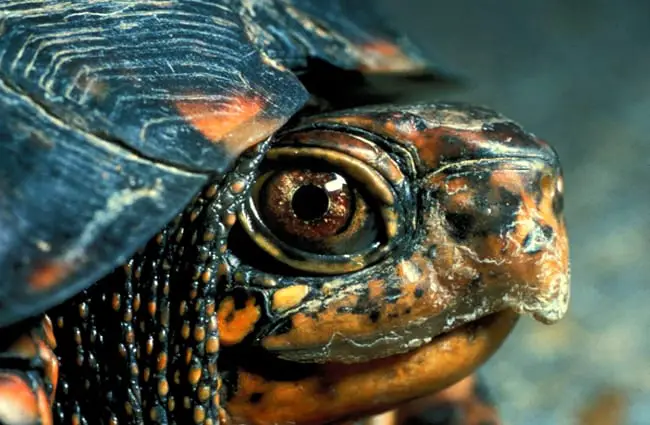A Comprehensive Guide to the Remarkable Box Turtle
Box turtles, the very name evokes images of serene woodlands and slow, deliberate movement. These captivating reptiles, belonging to the family Emydidae, are far more than just charming creatures; they are integral parts of the ecosystems they inhabit and possess a fascinating history stretching back millions of years. This guide delves into the world of box turtles, exploring their biology, behavior, habitat, and the challenges they face in a changing world.

Understanding Box Turtle Biology
Box turtles are easily recognized by their high-domed carapaces, providing excellent protection from predators. This “box” shape is not merely structural; it is a key adaptation allowing them to withdraw completely into their shells, a behavior from which they derive their name. There are four recognized species of box turtles in North America: the Eastern box turtle (Terrapene carolina carolina), the Three-toed box turtle (Terrapene carolina triunguis), the Gulf Coast box turtle (Terrapene carolina macrocephala), and the Florida box turtle (Terrapene carolina baurii). Each species exhibits subtle differences in coloration, size, and range.
Adult box turtles typically range in size from 4.5 to 8 inches, though some individuals can grow larger. Their coloration is highly variable, often featuring a mix of brown, yellow, orange, and even red markings. These patterns serve as camouflage, helping them blend into the leaf litter and undergrowth of their habitat. Interestingly, the carapace is not smooth; it displays growth rings, similar to trees, providing an indication of the turtle’s age, though estimating age accurately can be complex.
Habitat and Distribution
Box turtles are primarily found in the eastern and central United States, inhabiting a variety of woodland, forest, and grassland habitats. They require a mix of sunny and shady areas, along with access to a consistent water source – a small stream, pond, or even a perpetually damp area will suffice. They also prefer areas with loose, loamy soil, which facilitates digging and burrowing.
Their distribution is somewhat fragmented, reflecting the diverse habitats they occupy and the increasing impact of human activity. Eastern box turtles are the most widespread, ranging from southern Maine to Florida and west to Michigan and Illinois. The Gulf Coast box turtle is found along the Gulf Coastal Plain, and the Florida box turtle is confined to the Florida peninsula.

Diet and Foraging Behavior
Box turtles are omnivores, with a highly varied diet that changes throughout their lives. Young box turtles tend to be more carnivorous, feeding on insects, worms, and other invertebrates. As they mature, their diet shifts to include more plant matter – fruits, berries, fungi, leaves, and flowers. They are opportunistic feeders, readily consuming whatever is available in their environment.
They forage slowly and deliberately, using their keen sense of smell to locate food. They are known to revisit the same feeding areas repeatedly, establishing familiar foraging routes. Their diet plays a crucial role in seed dispersal, as they consume fruits and berries and then deposit the seeds in their droppings, contributing to the health and diversity of their ecosystem.
Lifespan and Reproduction
Box turtles are renowned for their longevity. In the wild, they can live for 50 years or more, with some individuals exceeding 100 years of age. Their slow metabolism and protective shell contribute to their long lifespan. However, they are slow to reach sexual maturity, typically not breeding until they are 10 to 15 years old.
Mating season typically occurs in the spring and early summer. Males will often engage in courtship displays, circling and nudging females. After mating, the female will excavate a nest, usually in a sunny location with well-drained soil. She will lay a clutch of 1 to 11 eggs, which incubate for 70 to 120 days. The sex of the hatchlings is determined by both genetics and incubation temperature. Warmer temperatures tend to produce females, while cooler temperatures produce males.

Ecological Role and Interactions
Box turtles play a vital role in their ecosystems. As mentioned earlier, they contribute to seed dispersal, helping to maintain plant diversity. They also help control insect populations by consuming large numbers of invertebrates. Their digging activities can aerate the soil and create microhabitats for other organisms.
They interact with a variety of other animals. Raccoons, opossums, skunks, and foxes are all known predators of box turtles, especially eggs and hatchlings. They also share their habitat with snakes, birds, and other reptiles. Occasionally, box turtles will engage in commensal relationships with other animals, such as allowing birds to pick off parasites from their shells.
Box Turtles and Humans
Historically, box turtles were a popular source of food for humans, particularly during times of economic hardship. However, this practice has declined in recent years due to conservation concerns. Today, the primary threats to box turtle populations are habitat loss, fragmentation, and road mortality.
Human activities such as deforestation, urbanization, and agriculture are destroying and fragmenting box turtle habitat. Roads pose a significant threat, as turtles are often killed while crossing them. The collection of turtles for the pet trade can also negatively impact wild populations.

Observing Box Turtles in the Wild & Providing Aid
If you encounter a box turtle in the wild, it is best to observe it from a distance and avoid disturbing it. Never remove a turtle from its habitat, as this can disrupt its natural behavior and potentially harm its survival. If a turtle is crossing a road, you can carefully move it to the side in the direction it was heading, but always be mindful of your own safety and the surrounding traffic.
If you find an injured turtle, contact a local wildlife rehabilitator or veterinarian for assistance. Do not attempt to treat the turtle yourself, as this could worsen its condition. Reporting sightings of box turtles to local conservation organizations can also help scientists track populations and monitor their health.
Caring for Box Turtles in Captivity
Keeping box turtles as pets requires a significant commitment and a thorough understanding of their needs. They require a spacious enclosure with a mix of substrates, including soil, leaf litter, and moss. The enclosure should also provide access to both sunny and shady areas, as well as a shallow water source for drinking and soaking. A varied diet consisting of insects, fruits, vegetables, and fungi is essential for their health. They need access to UVB and UVA lighting to properly absorb calcium. Regular veterinary checkups are also crucial to ensure they remain healthy.
It is vital to note that owning a box turtle is a long-term commitment due to their impressive lifespan. Prior to adopting one, prospective owners must carefully consider their ability to provide the necessary care for decades to come. They should also ensure that owning a box turtle is legal in their state or locality.
Fascinating Box Turtle Facts
- Box turtles can hibernate during the winter months, burying themselves in leaf litter or digging burrows to escape the cold.
- Some box turtles exhibit site fidelity, returning to the same foraging areas and overwintering sites year after year.
- Their shells are covered in keratin, the same material that makes up human fingernails and hair.
- Box turtle populations are declining in many areas, and they are considered a species of conservation concern.
- Individual box turtles can be identified by the unique patterns on their shells.
Box turtles are truly remarkable creatures. Their longevity, resilience, and ecological importance make them a vital part of the ecosystems they inhabit. By understanding their biology, behavior, and the threats they face, we can work to ensure their survival for generations to come.

![Red Angus Closeup of a beautiful Red Angus cowPhoto by: U.S. Department of Agriculture [pubic domain]https://creativecommons.org/licenses/by/2.0/](https://animals.net/wp-content/uploads/2020/03/Red-Angus-4-238x178.jpg)




![Red Angus Closeup of a beautiful Red Angus cowPhoto by: U.S. Department of Agriculture [pubic domain]https://creativecommons.org/licenses/by/2.0/](https://animals.net/wp-content/uploads/2020/03/Red-Angus-4-100x75.jpg)

